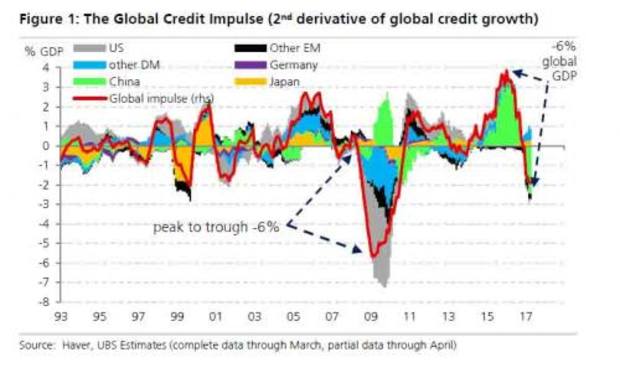Why Fed rate hikes are raising anxieties
For the fourth time in this cycle of tightening monetary policy, the Federal Reserve raised interest rates by a quarter-point on Wednesday. That takes the short-term policy rate -- the Federal Funds rate banks use for overnight lending to each other -- to a range of 1 percent to 1.25 percent, up from the post-recession low of zero to 0.25 percent. The Fed combined that move with an expectation to raise rates again before year-end.
Most notably, the Fed outlined its thinking on how it will reduce its $4.5 trillion balance sheet -- up from $900 billion pre-Great Recession after years of bond-buying stimulus. That could begin happening as soon as September, according to Goldman Sachs analysts, who figure that the "roll off" will start small but could eventually ramp up to a $50 billion-a-month pace.
If this seems like a change in tone after years of Fed policy dovishness, well, that's because it is. And that puts the financial markets and the broad U.S. economy on notice that credit costs are headed higher, with potentially nasty results.
The policy move came as a bit of a shock to Wall Street, demonstrated by the jarring intra-day selloff in big-tech stocks and the fact the futures market was pricing in only three rate hikes in total through the end of 2019. The Fed's own forecasts are much more aggressive.
In response, Asian and European stock markets traded sharply lower on Thursday. The three major U.S. stock indexes dipped in early trading, with the Dow Jones industrials down 0.21 percent, the S&P 500 off 0.55 percent and the Nasdaq Composite 0.94 percent lower -- as tech stocks resumed their slides, a trend that began last week.
Fed officials have also largely dismissed recent slowdowns in the U.S. economic data and inflation as transitory, focusing instead on the 4.3 percent unemployment rate (lowest since 2001) and other evidence of job market tightness. Fed Chair Janet Yellen in her post-meeting press conference explained that the ingredients are in place for inflation to rise.
Given the risks of falling behind the curve on inflation, she and her cohorts decided to continue to tighten the policy noose.
As a reminder, recessions have always been accompanied by higher interest rates in the post-1913 Fed era (although not every Fed tightening cycle has ended in recession).
The bond market is decidedly unhappy with the Fed's thinking: Long-term interest rates continued their seven-month-long decline from a high of 2.6 percent in December to just 2.15 percent now. That's the opposite of what the Fed wants. And it reflects a belief the economy and inflation are set too slow.
If the Treasury bond market's apprehension is accurate, equities and corporate bonds should weaken in response.
And the corporate sector looks unhappy as well, reflected in a very recessionary rollover in commercial and industrial loan activity (chart above). This is the axis by which Fed policy affects the economy: by changing the flow of credit. And right now, with fewer loans being issued, companies will be cutting their hiring and capital investment, and thus economic growth will drop.
The Fed's actions echo a global dynamic in which tightening credit conditions suggest a widespread economic drag is underway (chart above). It's possibly even recessionary. (China is a main culprit here, as Beijing clamps down on runaway "shadow banking" credit.)
We'll learn more in the weeks to come as second-quarter GDP growth data is released and Wall Street starts unveiling second-quarter earnings results. Keep an eye on financial sector profitability (weaker loan growth and lower long-term rates will weigh on bank earnings), autos (tighter credit could slow automotive financing) and industrials (lower capital expenditures as borrowing gets more expensive).






